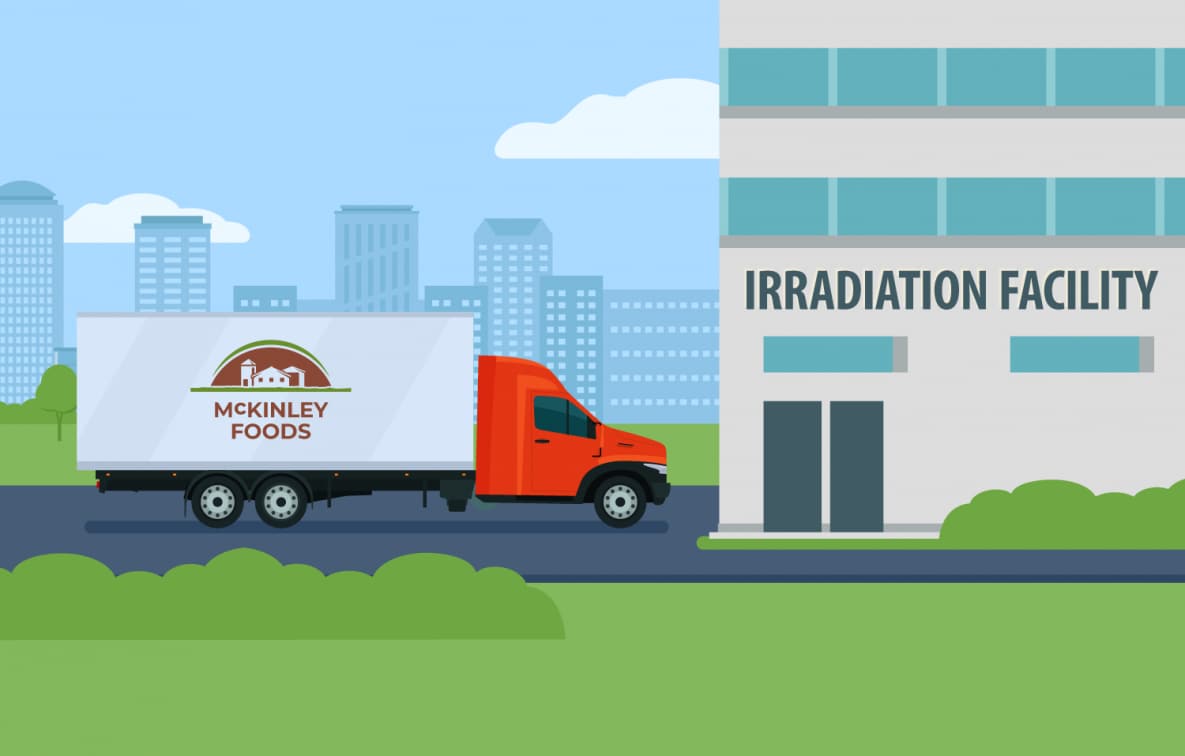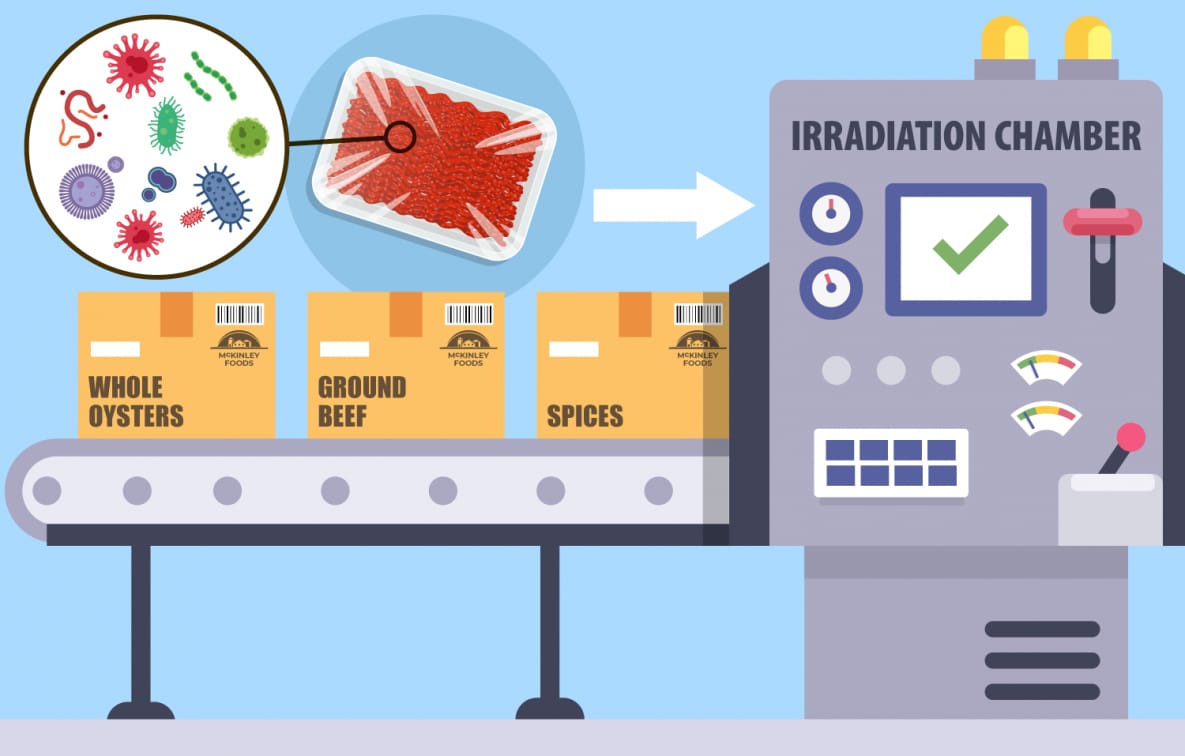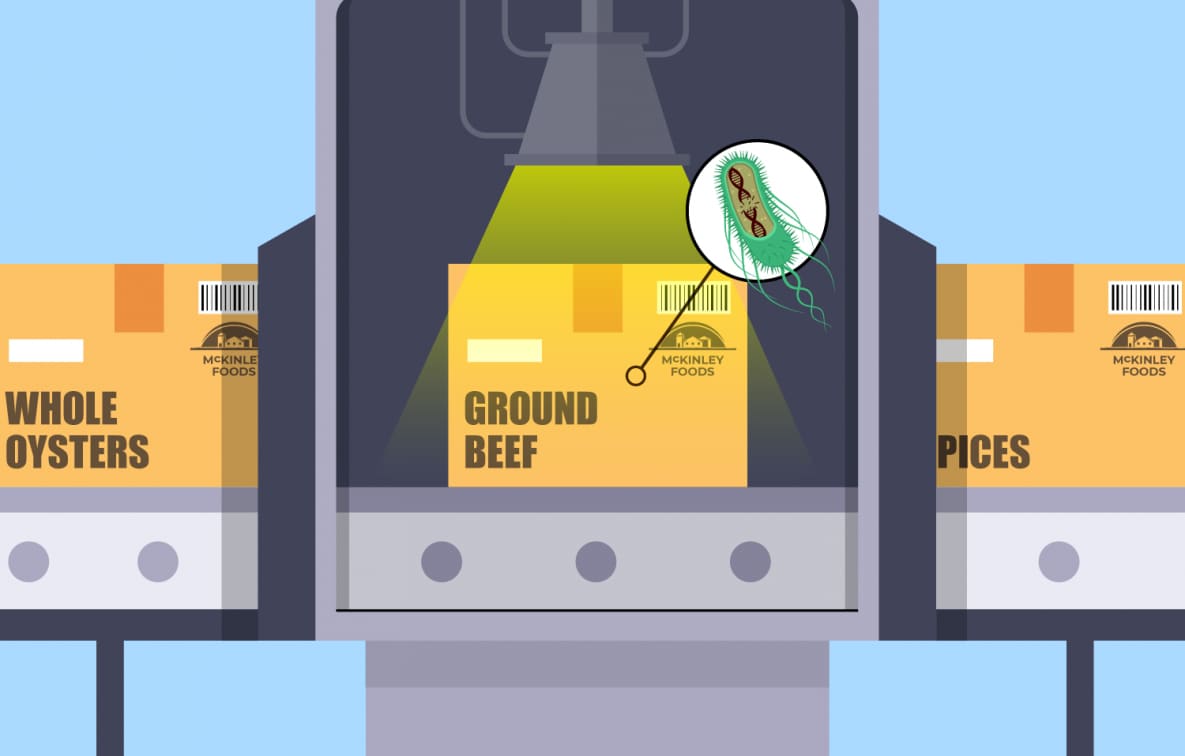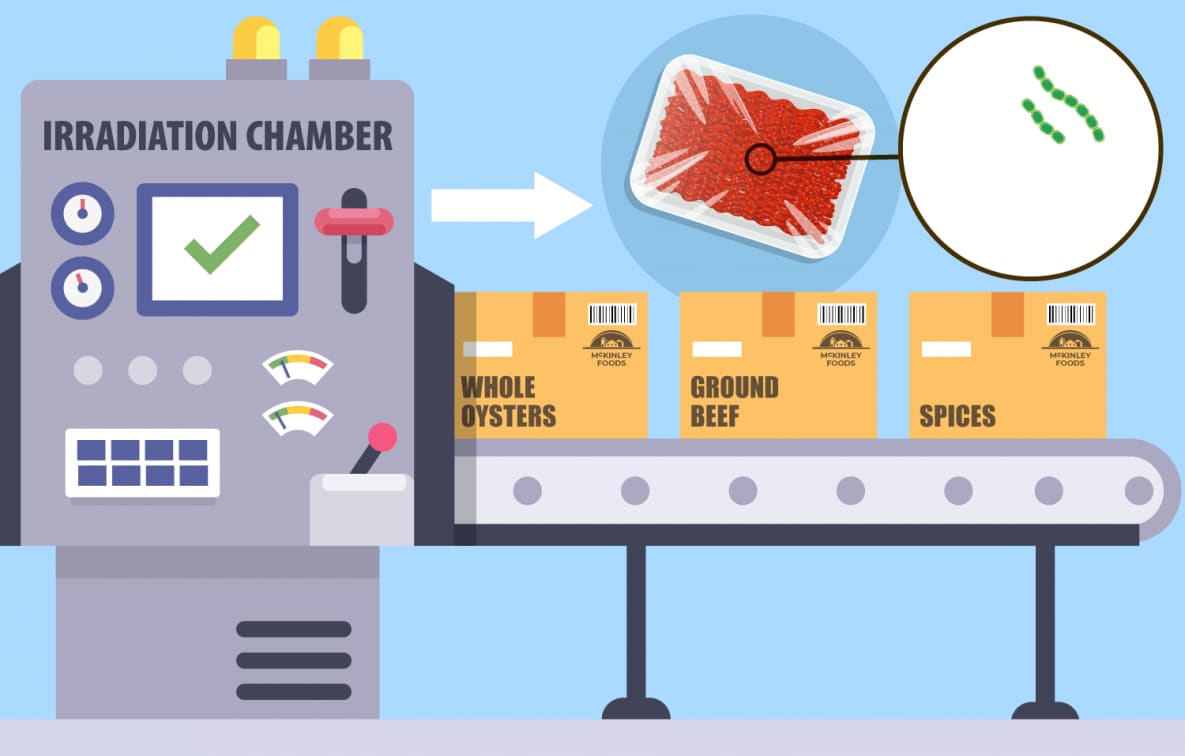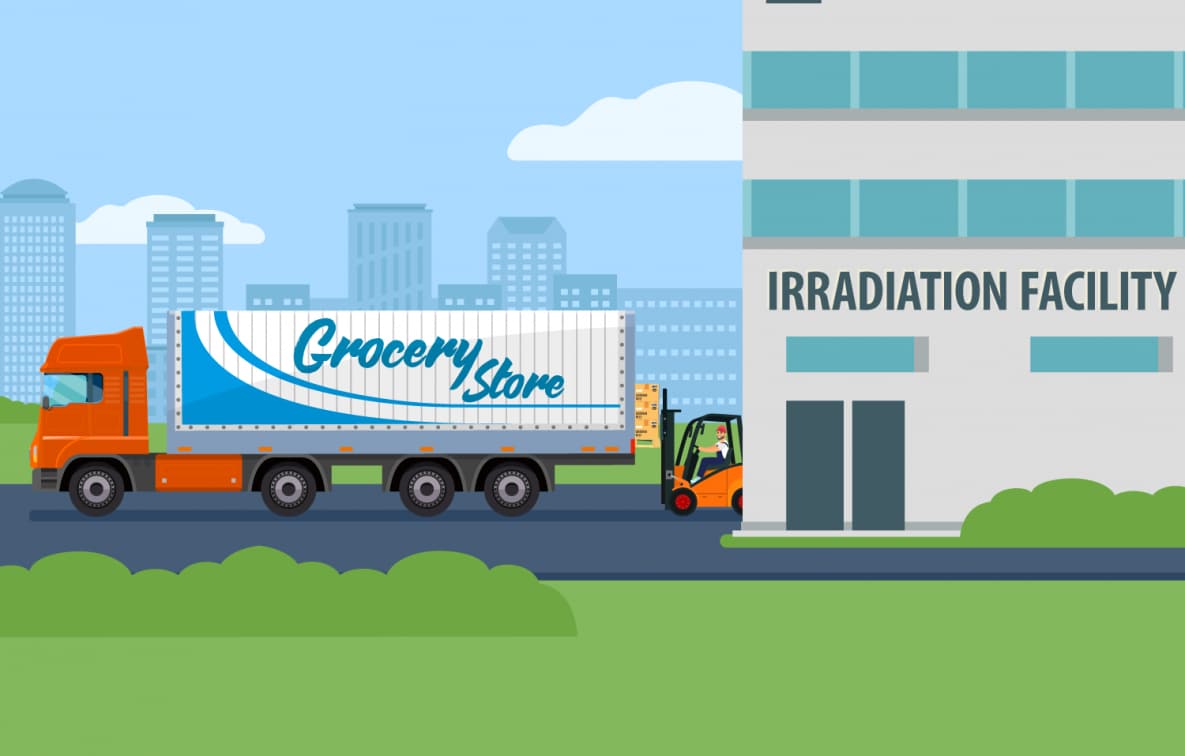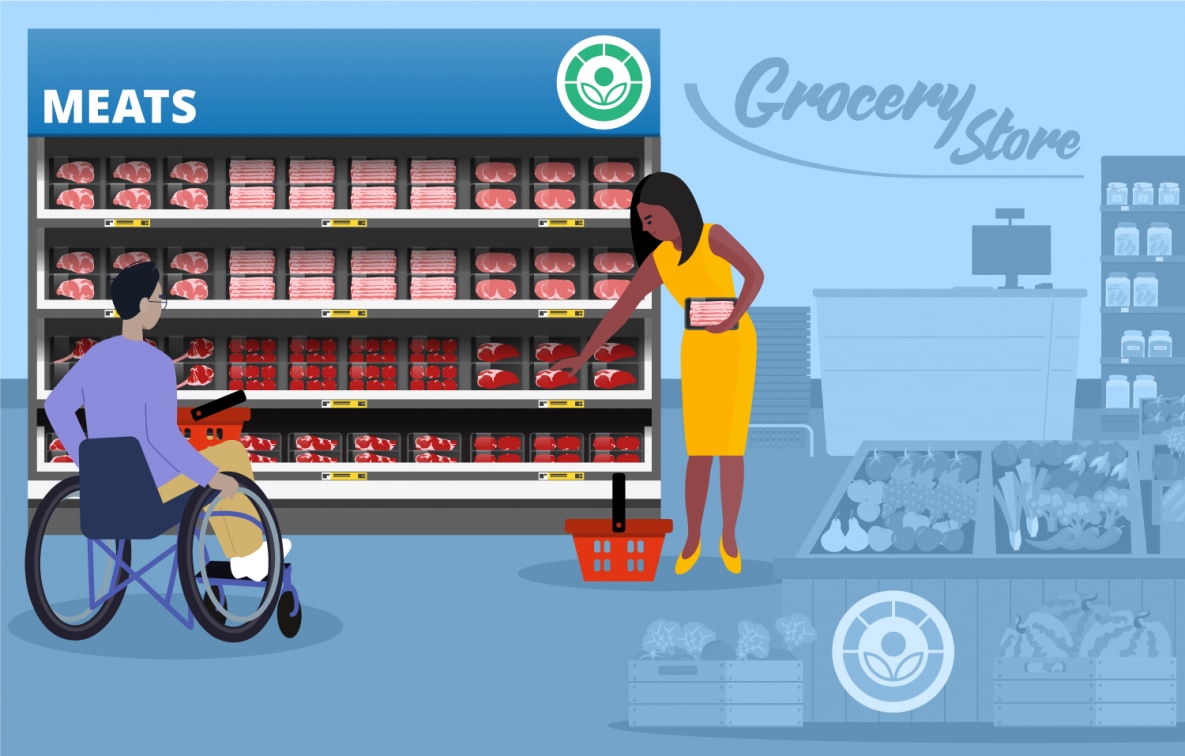Food Irradiation
Food irradiation is a food safety process that uses radiation to kill germs that can cause food poisoning (foodborne illness). Food irradiation is safe, and its safety and efficacy have been endorsed by various federal agencies and intergovernmental organizations. It does not change the texture or appearance of food and does not make food radioactive.
Food irradiation is also used to extend the shelf life of foods and control for insects. This page contains questions and answers you may have about food irradiation for food safety.
How does food irradiation work?
Food irradiation works by exposing food products to ionizing radiation. Food irradiation is considered a “cold” method, meaning it does not use heat to kill germs. Other food safety processes that you may be more familiar with, like pasteurization and canning, use heat.
The irradiation process happens after a food is produced and packaged. Food enters a chamber where it is exposed to a specific amount of radiation. The radiation penetrates the food and kills germs or prevents them from multiplying, and it does not linger in the food. Irradiation is one more protective step, but it does not replace other food safety measures.
What are the benefits of food irradiation?
Our food goes through several steps before it makes it into our home and onto our table. Food can be contaminated at any point in the food supply chain. Choosing irradiated foods is an extra step that can help prevent foodborne disease. It is still important to take food safety measures at home, such as washing produce and cooking meats thoroughly, even if the food was irradiated.
Irradiation can make foods safer that are typically eaten raw, like some produce. Irradiation can also make safer raw foods that you cook at home, like ground beef. That’s because irradiation kills most of the germs in the food before you buy it. Think of food irradiation as an added layer of protection against harmful germs that can make you sick.
Do irradiated foods become radioactive or lose nutrients?
Irradiated foods do not become radioactive, meaning they do not give off radiation. Eating irradiated foods does not expose you to or contaminate you with radiation or radioactive materials.
During the food irradiation process, beams of radiation pass through the food in the same way that X-ray beams pass through you when you get a medical X-ray. After you receive an X-ray, you are not radioactive, and no additional radiation or radioactive materials remain inside or outside your body. Similarly, after food is irradiated it does not have any additional radiation or radioactive materials inside or outside the food.
Irradiated foods do not lose a significant amount of nutrients during the process. Nutrient loss during irradiation is similar to the amount of nutrients lost during cooking, freezing, canning and other food safety methods.
Is food irradiation safe?
The U.S. Food and Drug Administration has approved food irradiation as a safe and effective process. FDA has also evaluated food irradiation for safety for over 30 years. Various other agencies and organizations have endorsed its safety and effectiveness including the Environmental Protection Agency, the U.S. Department of Agriculture, World Health Organization [PDF – 87 pages], and the International Atomic Energy Agency. National Aeronautics and Space Administration astronauts also eat irradiated foods.

Courtesy FDA
How can I tell if food is irradiated?
All irradiated foods must display the Radura symbol to let consumers know that the product has been treated with irradiation. For more detailed information on labeling, please visit the FDA food irradiation page.
What foods are irradiated and where can I buy them?
The FDA has approved a variety of foods for irradiation. Approved foods include:
- Fruits and vegetables
- Chicken, turkey, beef, and pork
- Shellfish
- Spices and seasonings
- Shell eggs
For more information on these foods, please visit the FDA food irradiation page. You can ask the stores where you shop if they sell irradiated foods.
What is the science behind food irradiation?
Food irradiation has been heavily studied and evaluated for its safety and efficacy for over 30 years. The reports below provide more information on the science behind food irradiation.
- Government of Canada (2016). Technical Summary – Health Canada’s Safety Evaluation of Irradiation of Fresh and Frozen Raw Ground Beef. Retrieved from https://www.canada.ca/en/health-canada/services/food-nutrition/food-safety/food-irradiation/technical-summary-safety-evaluation-irradiation-fresh-frozen-ground-beef.html#fn6-0-rf
- Tauxe, R. V. (2001). Food Safety and Irradiation: Protecting the Public from Foodborne Infections. Emerg Infect Dis, 7(7).
- FAO, IAEA, WHO(1999). High-dose irradiation : wholesomeness of food irradiated with doses above 10 kGy : report of a Joint FAO/IAEA/WHO study group. In. Geneva: World Health Organization.
- Wholesomeness of irradiated food: report of a joint FAO/IAEA/WHO Expert Committee [PDF – 36 pages]. (1981). World Health Organ Tech Rep Ser, 659, 1-34.
